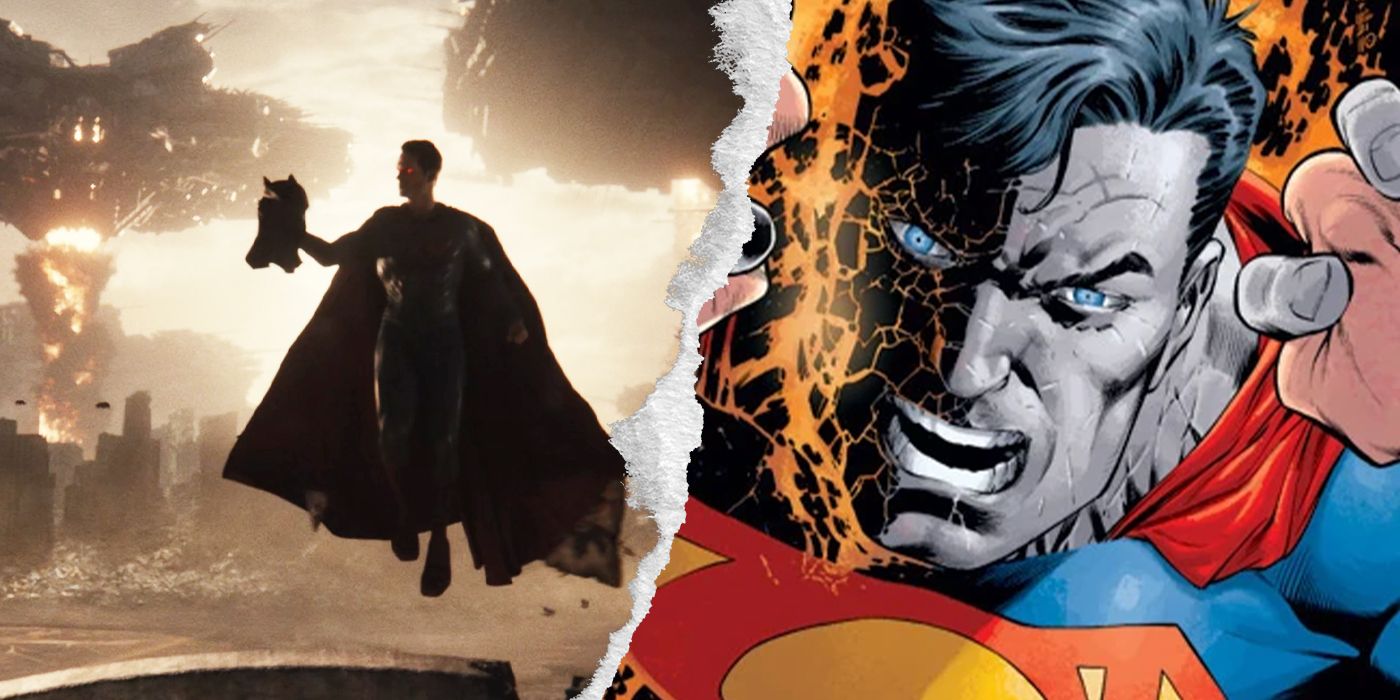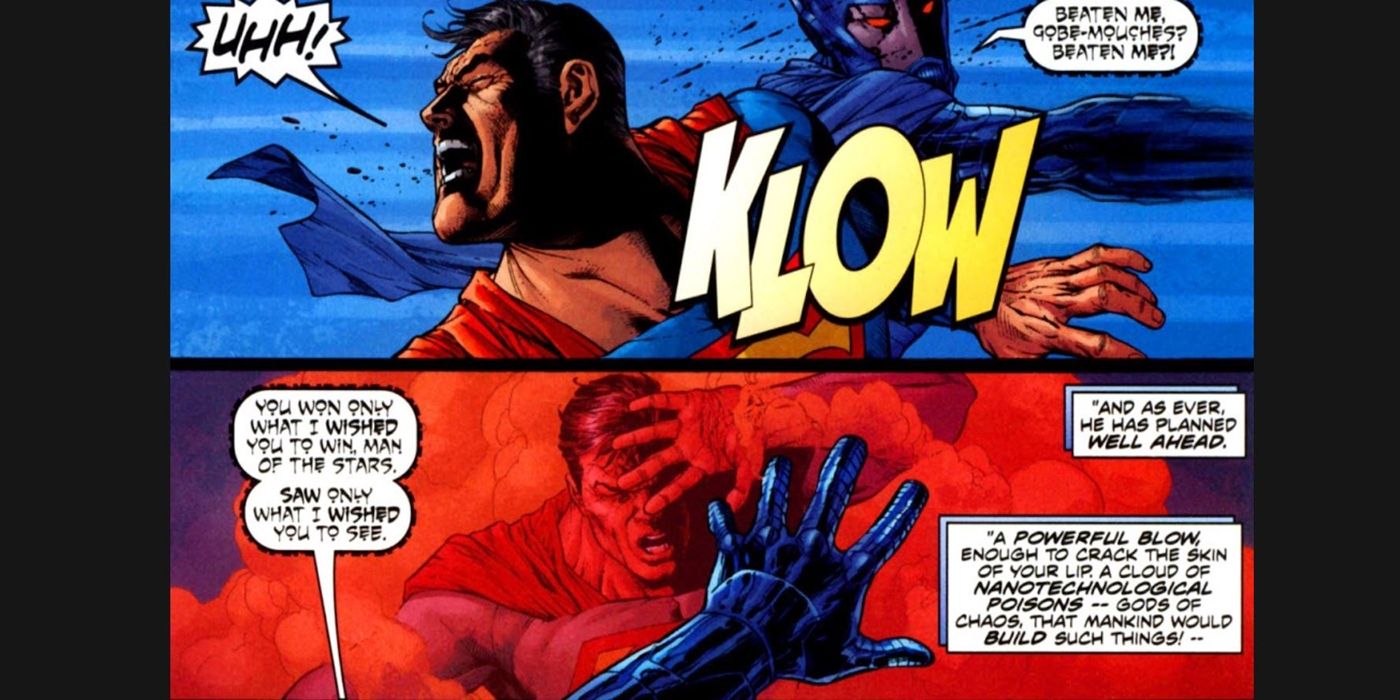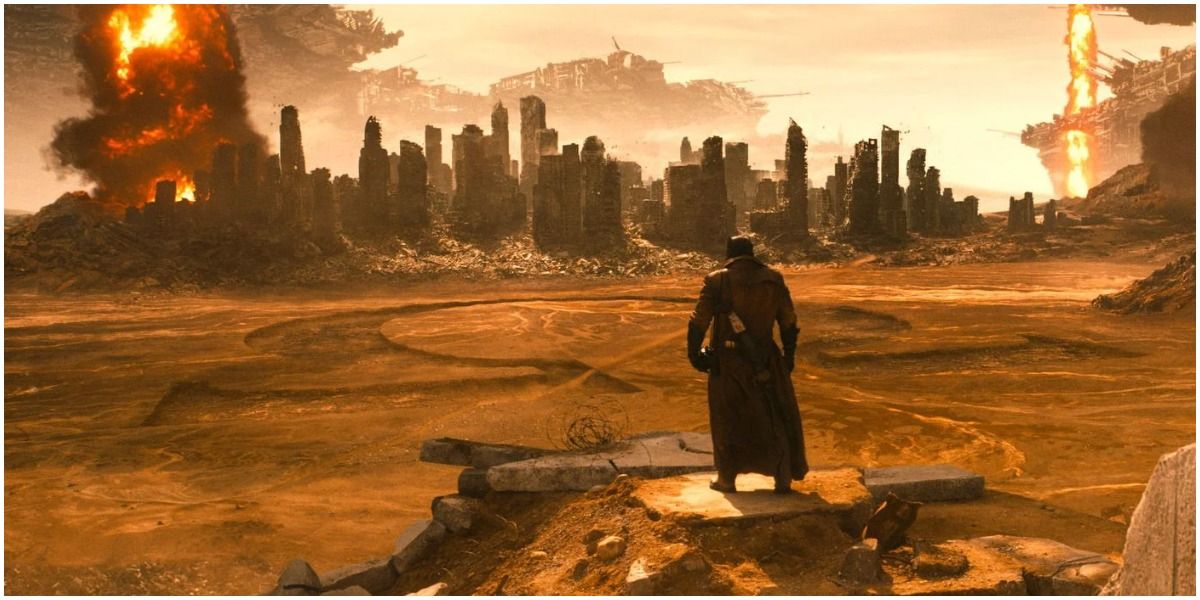Comic creators typically portray Superman in a much more optimistic, hopeful, and overtly heroic light than other heroes like Batman or even the similarly colored Wonder Woman. While Batman may rule the night and Wonder Woman is the hero who fights for peace, Superman has always been nearly everything to everyone.
To the boy worried about his pet, Superman is the best cat rescuer. To the nation on the edge of nuclear terrorism, he is the one person capable of stopping the bomb. To the citizens of Metropolis, the Man of Steel will always be there when needed most.
Despite this, he has had his fair share of darker stories over the years. These include Kingdom Come, Injustice, Superman: Red Son, and Whatever Happened to the Man of Tomorrow?. However, even with these well-known options, it seems a nearly forgotten Superman adventure, Camelot Falls, that paved the way for his darkest movie appearance.
Running from Superman #654-658, Falls introduced the audience to the villainous Khyber. While an unknown, Khyber's arrival immediately marks him as a being not to be taken lightly. Having powers that put him on par with Superman himself, any fight the Man of Steel engaged against Khyber seemed to have tremendous potential for destruction. An alternate universe of the magician Arion arrived soon after Khyber's first appearance to confirm that very impression.
This tentative timeline had Khyber decimating the world and its heroes. Even Superman falls before Khyber, the villain's nanites nullifying much of the Man of Tomorrow's powers. Khyber's victory seems total.
RELATED: She Was Superboy's First Love - Could She Be Due for A Comeback on Superman & Lois?
How Khyber Inspired Zack Snyder's Knightmare Sequence
He's not satisfied with just winning, however. Instead, he pushes it farther. In an act of self-aggrandizement, Khyber slings Superman into the Earth's core. The resulting reaction causes a global cataclysm with immediate widespread massive environmental damage. This potential dark future looks very similar to the "Knightmare Sequence" in the DC Extended Universe, showing the world as an apocalyptic wasteland.
In the disaster's wake, the world is then carved into a fiefdom by heroes and villains alike, with Lex Luthor actually stepping up to the plate to defend and try to rebuild Metropolis. Other survivors like Lois Lane, Jimmy Olsen, and a Parasite possessing some of Superman's powers, memories, and attitudes, join Luthor. Unfortunately, their victories are small, and hope seems to shrink with every passing day. That is until a stony, Darkseid-looking Superman eventually briefly returns to fend off Khyber. Though the battle is won, the Earth feels unlikely to ever be the same again with so many heroes gone. Again, this mirrors Snyder's take on Superman on the big screen.
Given the now dubious canonicity of the Knightmare Sequence, it, much like Camelot Falls, acts as essentially another "tentative timeline." Still, that doesn't diminish either's power or worth. On the contrary, they show that dark storylines and post-apocalyptic futures aren't new territory for Superman. They make it clear the symbol for hope has to fight for said sentiment as hard as anyone else. Despite this, they also introduce doubt. Both stories also deal with how Superman's presence may be endangering humanity despite his mountain of good intentions.



